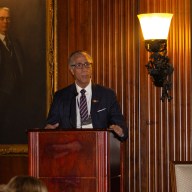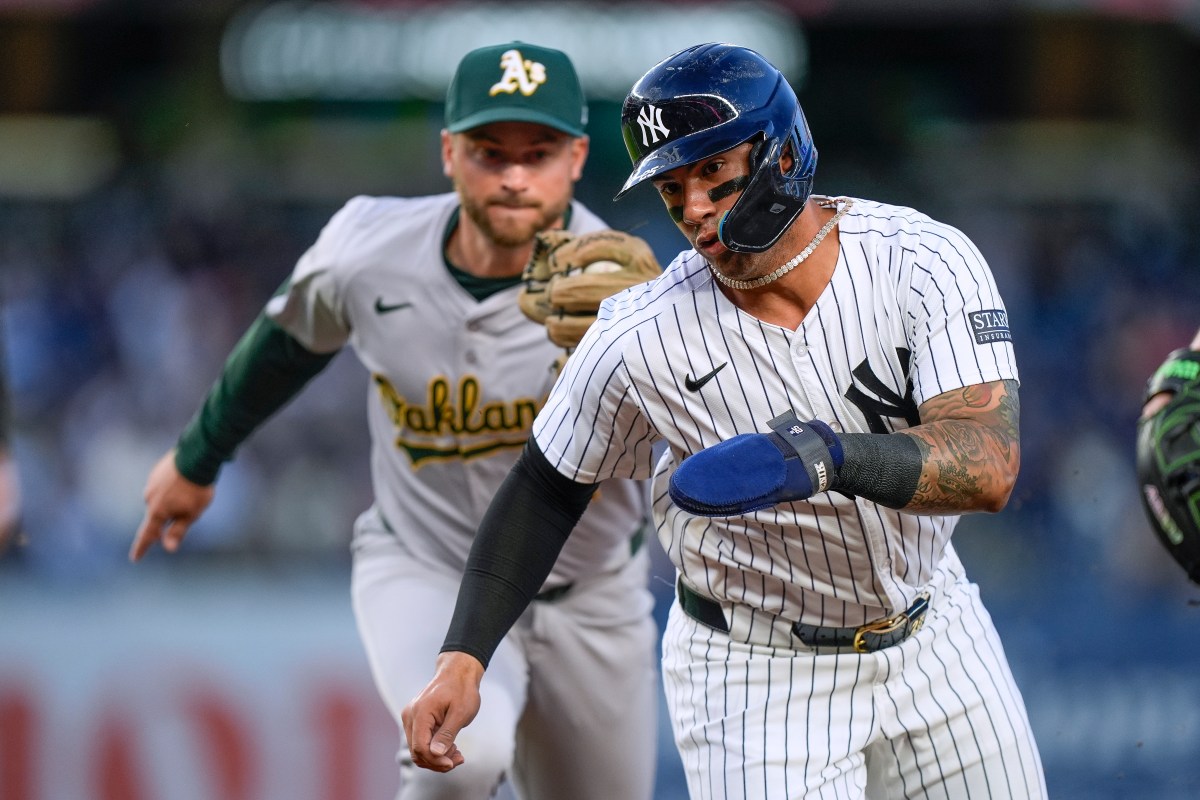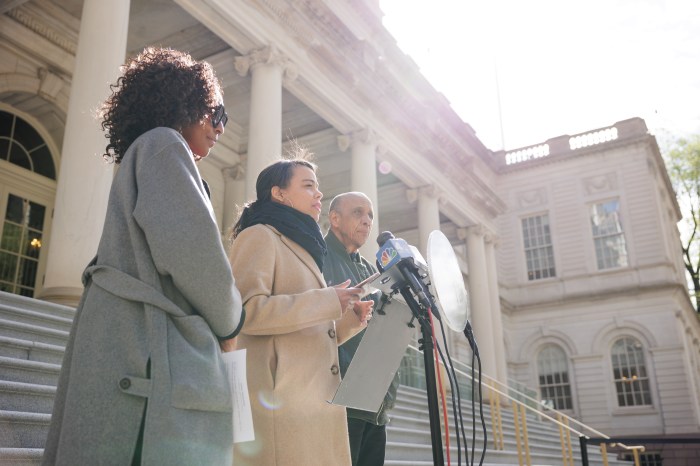The Bronx Zoo is busting out with babies.
The latest to join the nursery set is a four-month old snow leopard.
Add to the zoo’s kiddie gang three primate babies– including a brown collared lemur, silver leaf langur, born in the spring and a mandrill born last fall, as well as an Indian rhino calf born in April, and you have quite a nursery collection, although that new rhino was born at a hefty 120 pounds.
The latest addition was sired by daddy snow leopard Leo, who was rescued as a cub in the high mountains of northern Pakistan and brought to the United States in 2006 through a ground-breaking agreement between the two nations.
He could not be returned to the wild because he did not have the opportunity to learn essential survival skills from his mother.
While Leo is the proud dad, mom Maya did most of the work to bring the as-yet unnamed cub into the world April 9, while zoo officials only publicly unveiled him Aug. 27.
The zoo, usually waits a few months after the birth of newborns to make sure they are healthy and will survive before unveiling them to the public.
This is Maya’s second litter, but her first at the Bronx Zoo after being brought from the Niabi Zoo in Coal Valley, Illinois in November 2012 as a mate for Leo.
Zoo officials boast that it is a world leader in snow leopard care and husbandry, with more snow leopard births (over 70) than any other zoo in North America, and the first zoo in the United States to exhibit the big cats in 1903.
The zoo’s Himalayan Highlands habitat received the Association of Zoos and Aquariums Exhibit Award for outstanding design in 1987.
But getting back to that new baby, the zoo said he’ll be on exhibit with its mother until he is fully acclimated to his surroundings.
Exhibit times will be intermittent and vary day-to-day, with the public able to view mom and baby up close and almost personal, with only a barrier of non-reflective glass just about invisible to the naked eye.
Snow leopards are among the world’s most endangered big cats,with an estimated 3,500-7,500 remaining in the wild, said zoo officials. Their range is limited to remote mountains of Central Asia and parts of China, Mongolia, Russia, India and Bhutan.
The WCS said it has workede for decades on snow leopard conservation programs in the field with current projects in Pakistan, Afghanistan, Tajikistan, and western China. Past projects have also included work with snow leopards in Kyrgyzstan and Mongolia.
Leo’s off-spring is one small but important step in those efforts, with Bronx Zoo curator Pat Thomas calling it “a significant boost to the genetics of the Snow Leopard Species Survival Plan.
For more information about the Bronx Zoo go to www.bronxzoo.com or call 718-367-1010.























